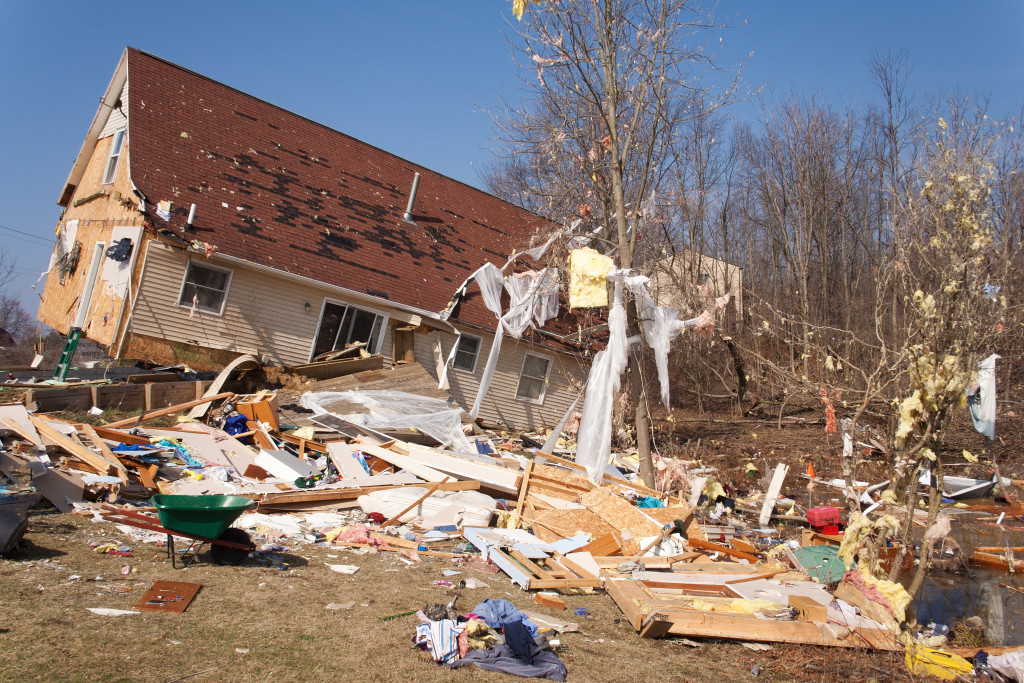- Prioritize safety first when assessing storm damage to a home.
- Document the destruction with photos and a detailed list of damages.
- Obtain insurance documentation and consider seeking professional help from an insurance law firm for filing claims.
- Have an emergency plan to reduce confusion during chaotic times.
- Utilize certified contractors to ensure repairs meet local regulations and standards.
After a storm, the damage to a home can be devastating. With heavy winds and pounding rain, roofs can be ripped off, windows shattered, and walls blown away entirely. According to the Insurance Institute for Business & Home Safety (IBHS), wind alone accounts for 28 percent of all property damage from natural disasters in the United States. More than $7 billion in damages occur yearly due to severe thunderstorms.
Structural damage is not the only issue, as flooding due to overwhelmed sewers and storm drains can contaminate homes, further damaging furniture and other items. Last year alone, flooding caused over $190 billion in damages across 34 states, according to the National Oceanic and Atmospheric Administration (NOAA). This destruction was so severe that many homes had to be destroyed or removed from their foundation walls before rebuilding could occur.
If a storm has damaged your home, taking the proper steps is essential to ensure you get the help and financial aid you need. Here are some of the most critical steps to take after a storm:
Prioritize Safety First

The most crucial step to take after a storm has damaged your home is safety. It should be the highest priority, as any additional damage to the property or injuries to those living in it can result in further costly repairs and medical bills. It’s always best to seek professional help from a qualified contractor or disaster relief agency before attempting any repairs yourself.
Regarding safety gear and equipment, when assessing a damaged home, it’s essential to have appropriate protective wear, such as thick rubber gloves, boots with a non-slip sole, hard hats or eye protection if needed, and other items depending on the situation. Additionally, having access to clean-up kits such as mops, buckets with hot water, bleach, or other disinfectants will help mitigate potential health hazards caused by floods or other water-related accidents due to storms.
Having an emergency plan beforehand is also essential for post-storm safety. Knowing what steps are being taken and who is responsible for each can help reduce confusion during chaotic times. This includes assigning tasks such as removing debris from property entrances or turning off utility services like gas and power lines until professionals can safely repair them.
Assess the Damage
After a destructive storm, assessing the damage to your home should be the first step you take. Knowing the extent of the destruction will help you get the right aid and resources to rebuild or restore your home.
Documenting and recording all the damages is essential, as this can be used for insurance claims and other financial assistance. Below are some steps to take when assessing a storm-damaged home:
Take Photos or Videos
Taking pictures or videos of all the damaged areas in your home is essential for determining what needs to be repaired and replaced. This documentation will help during insurance claims, prove the damages sustained, and provide evidence if there is any dispute with insurers. It’s also essential to include an inventory of destroyed furnishings or items to account for everything.
Create a List
Making a list of all the damages is essential for organizing them into categories such as structural damage, water damage, electrical issues, etc. A detailed account of every subject inside and outside your house should be included, along with the estimated repair costs.
Call an Expert
Suppose you are unsure about how extensive any particular damage might be. In that case, it’s best to call an expert who can inspect and evaluate it more accurately than you may observe from a visual assessment. Certified contractors are familiar with building codes in your area, ensuring that all repairs meet local regulations and standards. An expert can also estimate repair costs which may help when filing an insurance claim or applying for financial aid from state offices like FEMA (Federal Emergency Management Agency).
Get Insurance Documentation
Insurance companies often have guidelines regarding storm damage, so it’s essential to read through these documents carefully before filling out any forms related to a claim. It’s also advised to take photos or videos of any destroyed items covered by insurance before disposing of them since they may be eligible for reimbursement depending on policy guidelines. Ensure you keep copies of receipts from purchasing replacement items in case they need proof before compensating you later.
Seek Help with Insurance Claims

If you have trouble with your insurance claim, consider seeking help from a professional insurance law firm. Specialists often have experience in navigating complex paperwork and dealing with the corporate bureaucracy of insurers, as they know how to maximize any potential compensation for your damaged home. Furthermore, they can help if an insurance company unfairly denies your claim or fails to provide adequate coverage for all damages incurred.
Having a professional on your side when filing a claim can be invaluable, so it’s essential to note that this step is optional but highly recommended if needed.
Final Thoughts
After a storm, damage to a home can be extensive, expensive to repair, and often traumatic. However, with the proper steps and resources prepared beforehand or acquired afterward, you can get the help needed to restore your home to its original state. The most important thing is to prioritize safety first and assess all damages carefully before taking action to mitigate further destruction. Also, seeking legal experts, if needed, can help maximize any potential compensation for rebuilding your property. Ultimately time-consuming and challenging this process may be, but these simple steps will help reduce stress in the long run.

